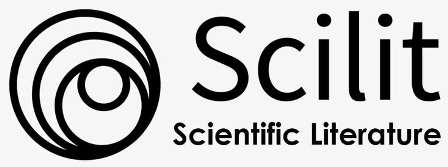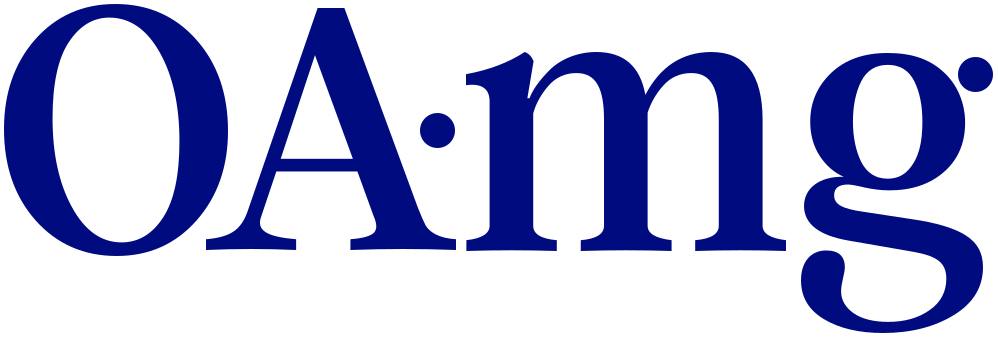Removal of Congo Red Dye Using Polyvinylidene Fluoride Polymer in Application Ultrafiltration Membranes
DOI:
https://doi.org/10.31272/jeasd.1611Keywords:
Congo Red dye removal, Phase Inversion, Pressures, Ultrafiltration membrane, Water FluxAbstract
The three ultrafiltration membranes prepared from different concentrations (13, 15, and 17 wt.%) of Polyvinylidene fluoride polymer are used to remove Congo Red Dye. The phase inversion method is utilized to fabricate the membranes. Membrane characterizations were studied using atomic force microscopy (AFM) to examine roughness. Scanning electron microscopy (SEM) was used to compare morphology and cross-sectional structure. Energy-dispersive spectrometry (EDS) determines the number, type, and distribution of atoms. Results showed that increasing the polymer concentration to 17 wt.% enhanced the membrane's hydrophobicity and improved dye rejection, attributed to higher surface roughness, a uniform and dense distribution of chemical elements (higher F and C peaks), and reduced porosity. Membrane performance was studied under operating pressures (2-7 bar) using a 100 ppm Congo Red dye solution in a cross-flow filtration system. The PVDF 17 wt.% membrane showed a flux rate of 4.46–41.89 L/m²·h at 2 and 7 bar, respectively, with 99% dye removal at 2 bar, decreasing to 94% at 7 bar.
References
] H. M. Alayan, I. R. Hussain, F. H. Kamil, M. M. Aljumaily, and N. A. Hashim, “Proficiency of few-layered graphene oxide nanosheets as promising sorbents for dye pollution management,” J. Environ. Eng., vol. 146, no. 8, p. 04020090, Aug. 2020. https://doi.org/10.1061/(ASCE)EE.1943-7870.0001774
] M. M. Hassan et al., “Studying the performance of various polymeric ultrafiltration membranes in dye removal,” Desalination Water Treat., vol. 280, pp. 139–156, 2022. https://doi.org/10.5004/dwt.2022.29076
] M. K. Alomar et al., “N, N-Diethylethanolammonium chloride-based DES-functionalized carbon nanotubes for arsenic removal from aqueous solution,” Desalination Water Treat., vol. 74, pp. 163–173, 2017. https://doi.org/10.5004/dwt.2017.20602
] S. Ghorai, A. K. Sarkar, A. B. Panda, and S. Pal, “Effective removal of Congo red dye from aqueous solution using modified xanthan gum/silica hybrid nanocomposite as adsorbent,” Bioresour. Technol., vol. 144, pp. 485–491, 2013. https://doi.org/10.1016/j.biortech.2013.06.108
] N. H. H. Hairom, A. W. Mohammad, and A. A. H. Kadhum, “Nanofiltration of hazardous Congo red dye: Performance and flux decline analysis,” J. Water Process Eng., vol. 4, pp. 99–106, 2014. https://doi.org/10.1016/j.jwpe.2014.09.007
] C. Lavanya et al., “Environmental friendly and cost effective caramel for Congo red removal, high flux, and fouling resistance of polysulfone membranes,” Sep. Purif. Technol., vol. 211, pp. 348–358, 2019. https://doi.org/10.1016/j.seppur.2018.10.012
] A. M. S. Jorge, K. K. Athira, M. B. Alves, R. L. Gardas, and J. F. B. Pereira, “Textile Dyes effluents: a Current Scenario and the Use of Aqueous Biphasic Systems for the Recovery of Dyes,” Journal of Water Process Engineering, vol. 55, p. 104125, Oct. 2023, doi: https://doi.org/10.1016/j.jwpe.2023.104125.
] [8]M. Premaratne, G. Nishshanka, V. Liyanaarachchi, P. Nimarshana, and T. U. Ariyadasa, “Bioremediation of Textile Dye Wastewater Using microalgae: Current Trends and Future Perspectives,” Journal of Chemical Technology & Biotechnology, vol. 96, no. 12, pp. 3249–3258, Jul. 2021, doi: https://doi.org/10.1002/jctb.6845.
] R. R. Abdullah et al., “Novel photocatalytic polyethersulfone ultrafiltration (UF) membrane reinforced with oxygen-deficient tungsten oxide (WO2.89) for Congo red dye removal,” Chem. Eng. Res. Des., vol. 177, pp. 526–540, 2022. https://doi.org/10.1016/j.cherd.2021.11.008
] W. K. Al-Musawy, M. H. Al-Furaiji, and Q. F. Alsalhy, “Synthesis and characterization of PVC-TFC hollow fibers for forward osmosis application,” J. Appl. Polym. Sci., vol. 138, no. 35, p. 50871, 2021. https://doi.org/10.1002/app.50871
] S. M. Doke and G. D. Yadav, “Novelties of combustion synthesized titania ultrafiltration membrane in efficient removal of methylene blue dye from aqueous effluent,” Chemosphere, vol. 117, pp. 760–765, 2014. https://doi.org/10.1016/j.chemosphere.2014.09.027
] J. Huang et al., “Evaluation of micellar enhanced ultrafiltration for removing methylene blue and cadmium ion simultaneously with mixed surfactants,” Sep. Purif. Technol., vol. 125, pp. 83–89, 2014. https://doi.org/10.1016/j.seppur.2014.01.043
] S. Mondal, H. Ouni, M. Dhahbi, and S. De, “Kinetic modeling for dye removal using polyelectrolyte enhanced ultrafiltration,” J. Hazard. Mater., vol. 229, pp. 381–389, 2012. https://doi.org/10.1016/j.jhazmat.2012.06.007
] X. Li and X. Lu, “Morphology of polyvinylidene fluoride and its blend in thermally induced phase separation process,” J. Appl. Polym. Sci., vol. 101, no. 5, pp. 2944–2952, 2006. https://doi.org/10.1002/app.23932
] M. G. Buonomenna et al., “Poly(vinylidene fluoride) membranes by phase inversion: The role the casting and coagulation conditions play in their morphology, crystalline structure and properties,” Eur. Polym. J., vol. 43, no. 4, pp. 1557–1572, 2007. https://doi.org/10.1016/j.eurpolymj.2007.01.030
] S. Darvishmanesh et al., “Novel polyphenylsulfone membrane for potential use in solvent nanofiltration,” J. Membr. Sci., vol. 379, no. 1–2, pp. 60–68, 2011. https://doi.org/10.1016/j.memsci.2011.05.045
] Z. Zhang et al., “Effect of zero shear viscosity of the casting solution on the morphology and permeability of polysulfone membrane prepared via the phase-inversion process,” Desalination, vol. 260, no. 1–3, pp. 43–50, 2010. https://doi.org/10.1016/j.desal.2010.04.062
] A. Akbari et al., “Influence of PVDF concentration on the morphology, surface roughness, crystalline structure, and filtration separation properties of semicrystalline phase inversion polymeric membranes,” Desalination Water Treat., vol. 46, no. 1–3, pp. 96–106, 2012. https://doi.org/10.1080/19443994.2012.677408
] M. Mulder, Basic Principles of Membrane Technology, 2nd ed. Dordrecht, Netherlands: Springer, 1996.
] C. Sun and X. Feng, “Enhancing the performance of PVDF membranes by hydrophilic surface modification via amine treatment,” Sep. Purif. Technol., vol. 185, pp. 94–102, 2017. https://doi.org/10.1016/j.seppur.2017.05.030
] K. Boussu et al., “Roughness and hydrophobicity studies of nanofiltration membranes using different modes of AFM,” J. Colloid Interface Sci., vol. 286, no. 2, pp. 632–638, 2005. https://doi.org/10.1016/j.jcis.2005.01.095
] M. M. Aljumaily et al., “Modification of poly(vinylidene fluoride-co-hexafluoropropylene) membranes with DES-functionalized carbon nanospheres for removal of methyl orange by membrane distillation,” Water, vol. 14, no. 9, p. 1396, 2022. https://doi.org/10.3390/w14091396
] M. Khayet, C. Cojocaru, and M. García-Payo, “Experimental design and optimization of asymmetric flat-sheet membranes prepared for direct contact membrane distillation,” J. Membr. Sci., vol. 351, no. 1–2, pp. 234–245, 2010. https://doi.org/10.1016/j.memsci.2010.01.052
] A. Tiraferri et al., “Relating performance of thin-film composite forward osmosis membranes to support layer formation and structure,” J. Membr. Sci., vol. 367, no. 1–2, pp. 340–352, 2011. https://doi.org/10.1016/j.memsci.2010.11.014
] M. B. Abid, R. A. Wahab, M. A. Salam, I. A. Moujdin, and L. Gzara, “Desalination technologies, Membrane distillation, and electrospinning, an Overview,” Heliyon, vol. 9, no. 2, p. e12810, Feb. 2023, doi: https://doi.org/10.1016/j.heliyon.2023.e12810.
] K. Liu, Razi Epsztein, S. Lin, J. Qu, and M. Sun, “Ion–Ion Selectivity of Synthetic Membranes with Confined Nanostructures,” ACS Nano, vol. 18, no. 33, pp. 21633–21650, Aug. 2024, doi: https://doi.org/10.1021/acsnano.4c00540.
] R. Javeed Ganaie, S. Rafiq, and A. Sharma, “Recent Advances in Physico-chemical Methods for Removal of Dye from Wastewater,” IOP Conference Series: Earth and Environmental Science, vol. 1110, no. 1, p. 012040, Feb. 2023, doi: https://doi.org/10.1088/1755-1315/1110/1/012040.
] ]P. Karami, M. M. H. Mizan, C. Ammann, A. Taghipour, J. B. P. Soares, and M. Sadrzadeh, “Novel Lignosulfonated Polyester Membranes with Remarkable Permeability and Antifouling Characteristics,” Journal of Membrane Science, vol. 687, p. 122034, Dec. 2023, doi: https://doi.org/10.1016/j.memsci.2023.122034.
Downloads
Key Dates
Received
Revised
Accepted
Published Online First
Published
Issue
Section
License
Copyright (c) 2025 Mohammed M. Hassan, Zaidun N. Abudi, Mustafa H. Al-Furaiji, Rouhollah Y. Farsani (Author)

This work is licensed under a Creative Commons Attribution 4.0 International License.
















